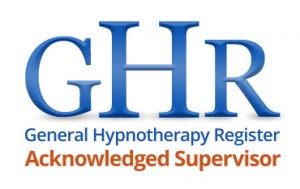
Therapy Supervision
If you are seeking a GHR acknowledged Supervisor as a trainee, or for your own established therapy practice. I can offer you an informal and relaxed way of working through confidential discussion and reflection.
Supervision can be done over the phone, using Skype or face-to-face. It can also be in a group setting of up to four supervisees, or on a one-to-one basis. You choose the format that you prefer.
Supervision is a structured process of regular professional support that aims to promote your continuous personal and professional development.
The higher your workload and the more stressful the nature of your work (such as working with severely disturbed, traumatized or abused clients), the more supervision you are likely to need.
How much supervision should you have?
Practitioners within the various branches of healthcare feel that it is important to meet with a colleague (or colleagues) to discuss, in confidence, ongoing cases and issues arising from them and to work through any personal matters that might affect their own position or ability as practising therapists. Such arrangements can take a variety of forms, the most usual of which are either personal One to One Supervision or participation within a Peer Support Group.
Newly qualified GHR Registrants are expected to engage in this beneficial process for a minimum of 2 hours in any 3 month period during their first 2 years of practice. Thereafter, although ongoing Supervision is encouraged, it becomes a voluntary process.
How often should supervision session be and for how long?
For supervision sessions to be meaningful, it is considered that a minimum duration of 30 minutes per session is required. This can be on a weekly, fortnightly, monthly or even quarterly basis, depending on the experience of the therapist and numbers of clients being seen at any particular time. For most newly qualified therapists, a session once a month will be required.
What do supervision sessions consist of?
It is my role as a supervisor to ensure that my supervisee is addressing the needs of their clients. It is also to aid the supervisee to reflect on their practice and thereby find ways to continue their learning whilst improving the service they provide.
This can be achieved through a non-judgemental relationship of trust and transparency between me and my supervisees – a relationship that is based on safety and mutual respect.
A large part of supervision is for the supervisee to review their past work with clients honestly and openly. By being critically reflected upon, it allows for experiential learning for the therapist that they can use in their future therapeutic sessions. Only by being honest and open with your supervisor, can you make supervision a true learning experience.
Although its main aim is protection of your client, supervision is also about allowing you to identify your own strengths and any areas that need attention, thereby allowing you to develop an ethical and legal practice in a professional manner.
What is the purpose of a supervisor?
- The purpose of supervision is to assist in the development of the reflective practitioner
- To support the therapist
- To maximise the effectiveness of the therapeutic relationship
- To monitor/ safeguard the interests of the client
- To maintain ethical standards as set out in the Ethical Framework
- The supervision task is shared by supervisee and supervisor
The following areas may be reflected on during the supervision session:
- What made the client come for therapy now?
- The background (history, recent events)
- What the client wants
- All the feelings that arise from the therapy process
- Theoretical approach
- Ethical considerations
- The setting
- Boundaries
- Managing risk
Please contact me on 07510 222 827 or via email on info@artemishypnotherapy.com to discuss your needs in complete confidence. I can see you at my clinic in Whitstable. Alternatively I can work with you on Skype.

